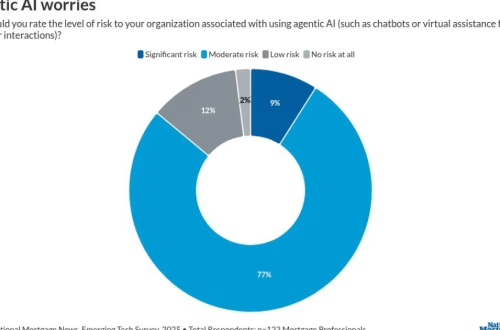Should I Refinance an Adjustable-Rate Mortgage?
Summary:
Refinancing an adjustable-rate mortgage (ARM) can offer financial stability for homeowners and investors worried about rising interest rates. With ARMs subject to market fluctuations, refinancing into a fixed-rate mortgage or a more favorable ARM structure can reduce payment uncertainty, lower long-term costs, or unlock home equity. This is especially critical now as the Federal Reserve raises rates, increasing the risk of ARM adjustments. Understanding key refinancing scenarios benefits aspiring homeowners, real estate investors, and business owners looking to optimize cash flow or equity strategies.
What This Means for You:
- Lock in Lower Rates Now: If you secured your ARM during a low-rate period, refinancing to a fixed-rate mortgage shields you from future hikes.
- Reduce Payment Shock: Convert to a fixed-rate loan before your ARM adjusts to avoid unpredictable monthly increases. Calculate breakeven points against closing costs.
- Access Equity for Growth: Use a cash-out refinance to tap home equity for renovations or investments if your ARM has built sufficient value.
- Warning: Rising interest rates may limit future refinancing opportunities. Delaying could cost you if credit scores or income drop.
Explained: Should I Refinance an Adjustable-Rate Mortgage?
An adjustable-rate mortgage (ARM) has an interest rate that changes periodically based on a financial index (e.g., SOFR or Treasury yields). Initial rates are often lower than fixed-rate loans but adjust after a fixed period (e.g., 5/1 ARM). Refinancing an ARM replaces your existing loan with a new one—either another ARM or fixed-rate mortgage—to secure better terms, reduce risk, or leverage equity.
In today’s rising-rate environment, ARMs become riskier as indexes climb, leading to higher payments at adjustment periods. Refinancing is strategically used to mitigate this volatility. For instance, converting a 5/1 ARM to a 30-year fixed mortgage locks in predictable payments, while refinancing to a lower-indexed ARM may offer short-term savings.
Refinancing decisions should consider caps (limits on rate adjustments), remaining fixed periods, and market trends. With inflation impacting indexes in 2023, homeowners are increasingly weighing ARM refinancing against potential recession-driven rate drops.
“Should I Refinance an Adjustable-Rate Mortgage?” Types:
Fixed-Rate Refinance: Swaps your ARM for a stable, unchanging rate. Ideal for long-term homeowners prioritizing budget certainty, though initial rates may exceed current ARM rates. Pros: Predictability, protection from rising rates. Cons: Higher upfront rates than ARMs, prolonged breakeven if moving soon.
ARM-to-ARM Refinance: Swap to a new ARM with better terms (e.g., lower margin or initial rate). Suitable if planning to sell before adjustment or expecting rate declines. Pros: Lower introductory payments. Cons: Continued exposure to market volatility.
Hybrid Options & Cash-Out Refinance: Convert to a fixed-period ARM (e.g., 10/1 ARM) for temporary stability or refinance to withdraw equity. Latter suits investors needing capital but increases loan balance.
Requirements of “Should I Refinance an Adjustable-Rate Mortgage?”:
Eligibility hinges on credit (typically 620+), home equity (20%+ avoids PMI), debt-to-income ratio (DTI ≤43%), and stable income. Lenders scrutinize payment history on your current ARM—late payments may disqualify you. Investment property refinancing often requires higher credit (680+) and reserves.
“Should I Refinance an Adjustable-Rate Mortgage?” Process:
Step 1: Evaluate Goals & Market Rates
Compare current ARM terms to today’s fixed/ARM rates. Use refinance calculators to model savings.
Step 2: Pre-Approval & Application
Submit financial docs (W-2s, tax returns, asset statements). Lenders assess creditworthiness and property value.
Step 3: Appraisal & Underwriting
An appraisal confirms home value. Underwriters verify risk and approve final terms.
Step 4: Closing
Sign new loan docs, pay closing costs (2-5% of loan balance), and begin new payment schedule within 3 weeks.
Choosing the Right Finance Option:
Interest Rate Forecast: If rates are projected to rise, lock in fixed. If declining, a shorter ARM may save money. Monitor Federal Reserve announcements.
Breakeven Analysis: Calculate when refinance savings offset closing costs. Example: $4,000 closing costs ÷ $200 monthly savings = 20-month breakeven.
Red Flags: Avoid loans with prepayment penalties, balloon payments, or adjustable rates with uncapped lifetime increases. Always compare lender fees.
People Also Ask:
Q1: When is the best time to refinance an ARM?
Refinance 6–12 months before your ARM’s first adjustment to secure lower rates and avoid payment spikes. Time it when credit scores peak and rates dip.
Q2: Can I refinance an ARM with bad credit?
Difficult but possible via FHA Streamline (min 580 credit) or lender-specific programs. Expect higher rates and stricter equity demands.
Q3: Should I refinance to another ARM or a fixed-rate loan?
Fixed is safer for long-term ownership. Choose ARMs only if moving/selling within the fixed period (e.g., 5–7 years).
Q4: How do I compare refinance lenders?
Request Loan Estimates detailing rates, APRs, and fees. Prioritize lenders offering rate locks and low origination fees.
Q5: Do ARMs have prepayment penalties?
Some do—especially in early years. Review your original loan agreement before refinancing to avoid fees.
Extra Information:
1. Consumer Financial Protection Bureau (CFPB) ARM Guide: Explains adjustment caps and triggers
2. Freddie Mac Refinance Calculator: Model ARM vs. fixed refinance savings
3. HUD Refinancing Programs: Details FHA Streamline options for credit-challenged borrowers
Expert Opinion:
Refinancing an ARM demands proactive timing and clear financial objectives. Waiting until rates spike can trap borrowers in unaffordable payments. Evaluate refinancing not just for rate reductions but for stabilizing cash flow and aligning with investment horizons—escalating inflation makes this decision urgent.
Key Terms:
- ARM refinance break-even calculator
- Refinance adjustable-rate mortgage to fixed rate
- Cash-out refinance ARM equity
- 5/1 ARM refinance strategies 2023
- Pros and cons of refinancing ARM early
*featured image sourced by Pixabay.com
Automatic Mortgage Calculator
Welcome to our Automatic Mortgage Calculator 4idiotz! Please just add your figures in the correct sections below and the Automatic Mortgage Calculator will automatically calculate the results for you and display them at the bottom of the page.




